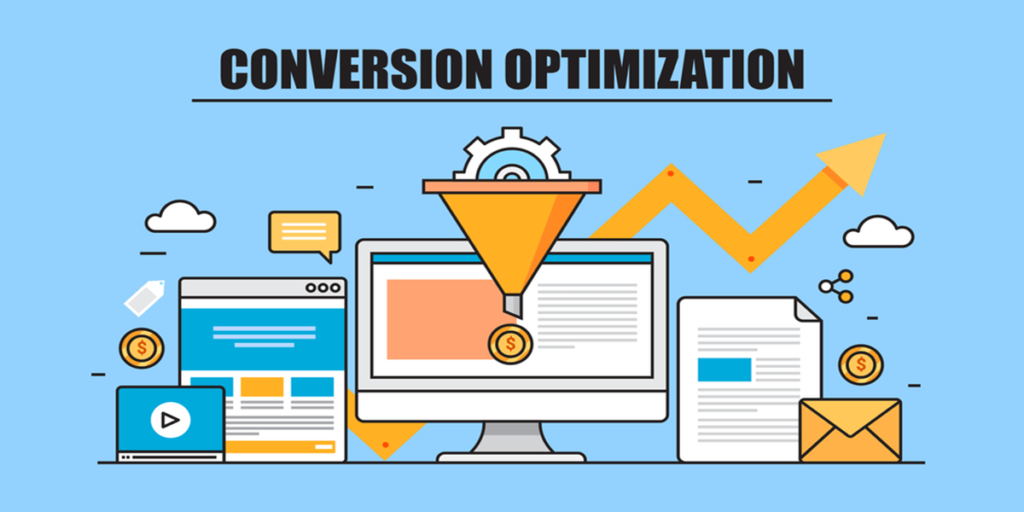
Conversion Optimization: 7 Website Design Secrets for Success
Introduction A website is more than just an online presence—it’s a powerful tool that should convert visitors into customers. If your site isn’t designed with conversion optimization in mind, you could be losing valuable leads and sales. So, what makes a high-converting website? It’s a combination of speed, user experience, strong CTAs, and trust-building elements. In this guide, we’ll cover seven essential website design secrets that will help you maximize conversions and grow your business. 1. Lightning-Fast Loading Speed Speed is non-negotiable when it comes to website performance. Studies show that if a page takes more than three seconds to load, over 50% of visitors will leave. How to Improve Speed: ✅ Compress and optimize images✅ Use a content delivery network (CDN)✅ Minimize scripts, plugins, and redirects Example: Amazon found that a 100-millisecond delay in load time reduced sales by 1%. Speed directly affects revenue! 2. Mobile-First Design Over 50% of web traffic comes from mobile devices. If your website isn’t optimized for mobile users, you’re losing potential customers. Best Practices for Mobile Optimization: ✅ Use a responsive design that adapts to all screen sizes✅ Ensure text is easy to read and buttons are finger-friendly✅ Test your website on multiple devices for a seamless experience Google also prioritizes mobile-friendly websites in search rankings, making mobile optimization essential for SEO and conversions. 3. Clear and Compelling Call-to-Action (CTA) A strong CTA guides visitors toward taking action—whether it’s purchasing a product, signing up for a newsletter, or booking a call. How to Make CTAs More Effective: ✅ Use action-driven language (e.g., “Get Started,” “Claim Your Free Trial”)✅ Make CTAs stand out with bold colors and contrasting backgrounds✅ Place CTAs above the fold and strategically throughout your page Example: Changing the CTA button color increased HubSpot’s conversion rate by 21%—small design changes can make a big impact! 4. Simple and Intuitive Navigation If visitors can’t find what they’re looking for quickly, they’ll leave. A cluttered or confusing navigation structure leads to high bounce rates. Navigation Best Practices: ✅ Limit your main menu to 5-7 items for clarity✅ Use breadcrumb navigation to improve the user journey✅ Keep the search bar visible and functional A well-structured website keeps users engaged longer, increasing the chances of conversion. 5. Engaging Visuals and High-Quality Content Users are more likely to trust and engage with websites that feature high-quality visuals and well-structured content. Tips for Engaging Content & Design: ✅ Use real, high-resolution images instead of generic stock photos✅ Break up long text with headings, bullet points, and white space✅ Add videos—they can boost conversions by 80%! People process visuals 60,000 times faster than text. A clean, visually appealing website builds trust and increases engagement. 6. Social Proof and Trust Signals Visitors trust businesses with real customer feedback and security assurances. Without these, potential customers may hesitate to take action. How to Build Trust: ✅ Showcase customer testimonials and reviews prominently✅ Display trust badges (SSL certificates, payment security logos)✅ Highlight client logos, case studies, and media mentions Example: A BrightLocal study found that 92% of consumers trust online reviews as much as personal recommendations. Adding reviews can significantly boost conversions. 7. Continuous A/B Testing & Optimization A high-converting website is never static—it requires continuous testing and optimization. How to Improve Website Performance: ✅ A/B test different headlines, CTA colors, and layouts✅ Use heatmaps to analyze user behavior and improve weak areas✅ Monitor key metrics like bounce rate, conversion rate, and user flow Websites that regularly test and optimize see higher conversion rates over time. Never assume your current design is perfect—always experiment and improve! Conclusion A high-converting website isn’t just about aesthetics—it’s about conversion optimization. By focusing on: ✅ Speed for faster user experience✅ Mobile-friendliness to reach more visitors✅ Strong CTAs to guide users to action✅ Intuitive navigation for easy browsing✅ Engaging visuals and content for better user experience✅ Social proof and trust signals to boost credibility✅ Continuous testing and optimization for ongoing improvement …you can turn more visitors into customers and increase your revenue. What’s Next? Take a closer look at your website today. Are you implementing these conversion-boosting design elements? If not, start optimizing now and watch your conversions skyrocket! 🚀.https://byteminders.com/









